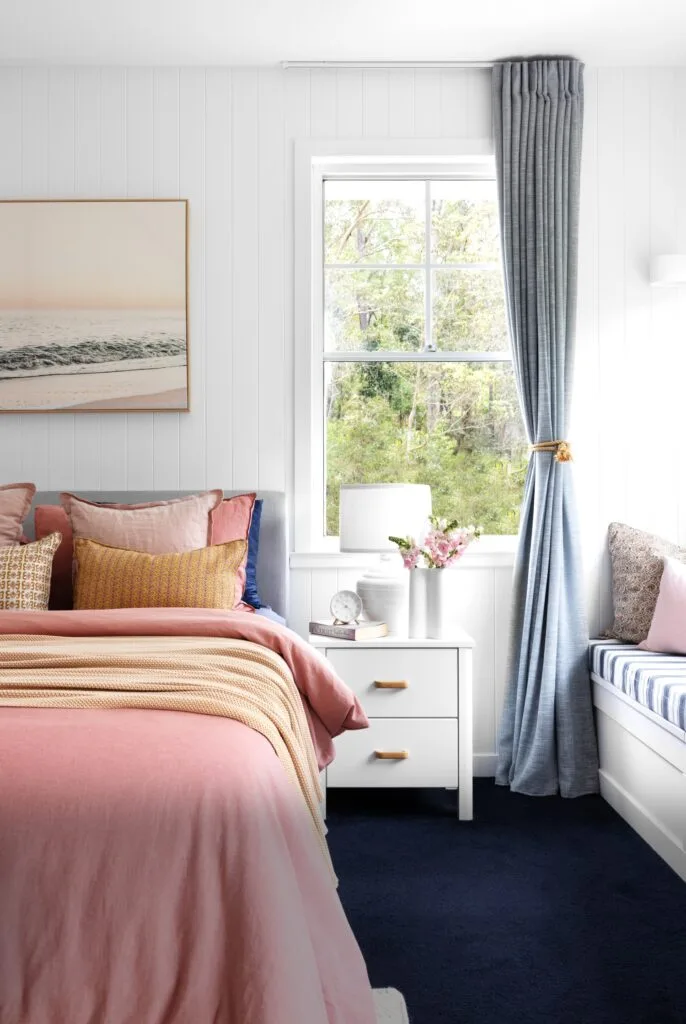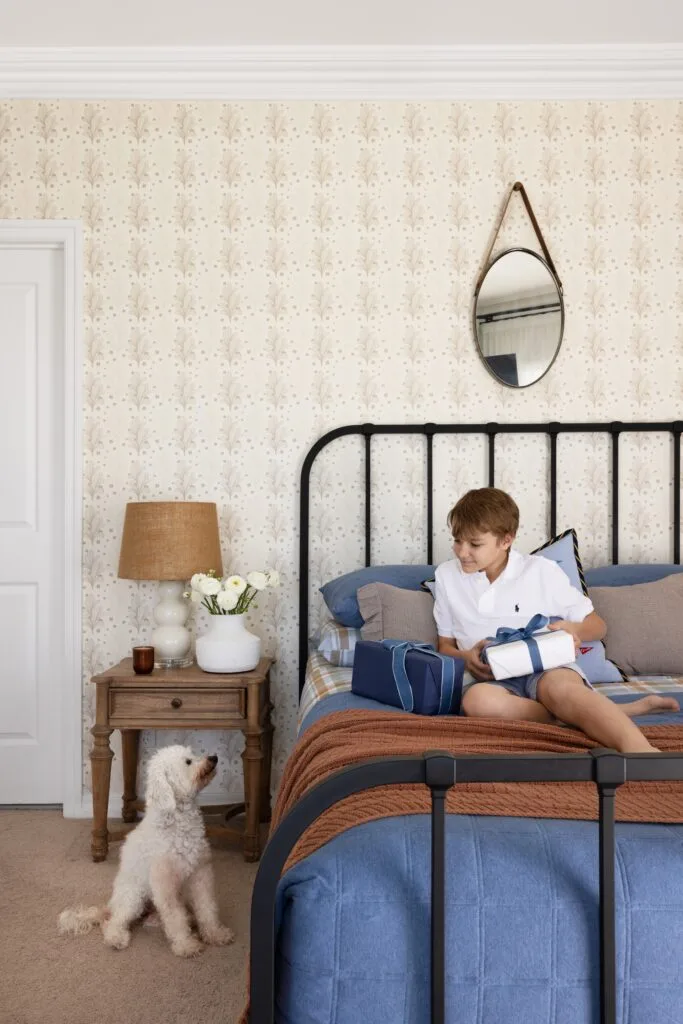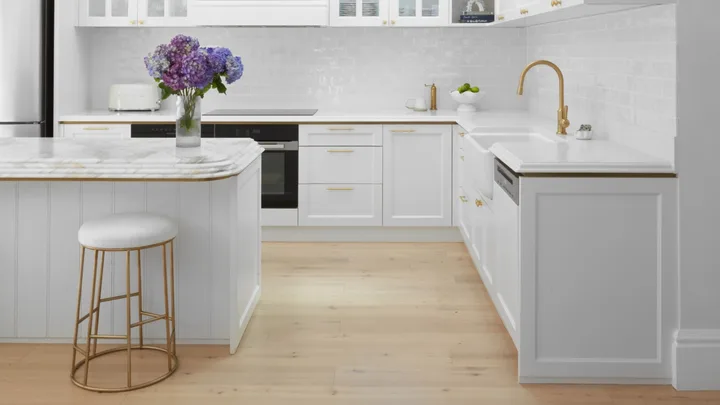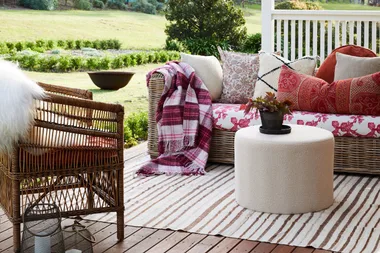If you’re looking to buy a new property or renovate your current home, making the decision between hard flooring or carpeted flooring is usually one of the first things you’ll be faced with when devising an interior scheme.
Connect with trusted tradies. Receive instant quotes for your next job with hipages.

The decision between hard and soft flooring can be a tough one, especially if you have a young family or pets to consider. The kind of flooring you choose also needs to be robust, easy to care for and have a timeless style so it doesn’t date too quickly.
To help you make the right choice for your home, we spoke to flooring experts at Choices Flooring and Carpet Court to dig deep on the benefits of installing hard versus soft flooring.

Hard flooring
Hard flooring is really any type of flooring that is, well, hard. Timber, engineered floorboards, tiles, vinyl, vinyl planks, hybrid options, and laminate all fall into this category.
Benefits of hard flooring
Hard flooring is a popular and stylish option for homes that require robust and low-maintenance flooring. The benefits include:
Durable: Scratch and scuff resistant hard flooring options are perfect for busy households as wear-and-tear from everyday use is minimised. Spills from food and drinks can easily be wiped clean without having to call in a professional.
Easy to clean: A vacuum cleaner and a mop and bucket are all you really need to keep a hard floor clean.
Low maintenance: Even vinyl, the most affordable hard flooring option, can last anywhere from 10-20 years with minimal maintenance. Hardwood flooring, on the other hand, has a longer lifespan but does require some maintenance and will nee to be refinished every 7-10 years.
Allergy-friendly: With regular cleaning and maintenance, hard floor options are great for those with allergies and asthma.
High quality look: Hard flooring options are often considered premium and may even add value to your property. You can also create a customised look with timber or vinyl planks by laying them in a chevron or herringbone pattern.

How to care for hard floors
The best way to maintain hard floors really depends on the type of material you select. Here, we break down the best ways to keep your hard floors looking like new:
Timber flooring
For timber, sweep and vacuum as often as necessary to remove any loose dirt before it can scratch the floor, and be sure to vacuum before washing your floors.
Laminate and vinyl flooring
For laminate and vinyl, don’t use abrasive cleaners, steel wool or scouring powder on your floor and never wax or polish your floors. Additionally, you should never use a stream mop on your floors.

Area rugs can create zones within an open plan home and also protect hard floors from wear and tear. (Photography: Alana Landsberry | Styling: Corina Koch)
Tiles
Thoroughly sweep or mop tiled floors before mopping with a gentle solution of mild detergent and warm water. Tile grout can become discoloured over time, but can easily be brought back to sparkling new using specialised grout cleaner and a soft grout brush. Reseal grout 2-4 years.
Protect with mats and rugs
Protect hard floors by covering high traffic zones with rugs. “Layering rugs on hard floors is also a great way to add colour, patterns, and texture to a room,” says Choices Flooring’s brand communications manager.
Carpet
There are many benefits to installing carpet, and the first is that it tends to be cheaper per square metre than hard flooring alternatives. Carpets are also a great choice for homes located in a cooler climate, as the soft textile not only provides warmth underfoot, but can also act as another layer of insulation, warding off the winter chills.

Benefits of carpet
Comfort: There’s nothing better than the added comfort and luxury of soft beautiful carpet underfoot.
Safety: Carpet can soften accidental falls, so is a great option for homes with young children.
Style: With endless colours, patterns and piles, carpet can completely change and enhance a room’s style.
Hygiene: Contrary to popular belief, a properly cared for carpet can create an environment that has less dust and is better for allergy sufferers than hard floors! This is because the carpet fibres trap the dust and stop it circulating endlessly in a room, allowing the dust to be vacuumed up.
Noise: Being a source of insulation, carpet also works as a sound barrier.
Warmth: Carpet provides thermal resistance, so it will assist in maintaining warmer room temperatures longer than other types of floors.

Carpeting trends
Colour
Carpet Court’s national manager says people are becoming bolder with their carpeting choices. Neutral shades are still popular, of course, but people are looking to carpet to create impact and add personality to a space. “We are seeing contrasting colours and tonal styling with blush pinks and rich saturated indigos,” he says.

Natural fibres
Shoppers are also turning to natural fibres such as wool and sisal to imbue a room with texture, says Carpet Court’s national maanger. “Wool carpet with dual tonality and chunky, textured loop pile provides visual interest, especially in a minimalist space. These kinds of textured carpets not only create a relaxed, stylish look but are soft and won’t lose their structure under moderate footfalls.” Wool is also naturally hypoallergenic, which means it can be suitable option for allergy and asthma sufferers.
Low-maintenance, pet-friendly carpeting
People with pets, on the other hand, are looking for durable carpets that are easy to clean. “Advanced technologies have allowed for synthetic carpets to have superior resistance to spills and fading, as well as be durable and allergy-friendly.”

How to care for carpet
Vacuum regularly
Vacuum your carpet thoroughly at least weekly and more frequently in high traffic areas. This will remove soil and grit before it works its way below the pile surface, where it’s far more difficult to remove and can roughen the carpet and dull its appearance. Use a quality vacuum cleaner – fitted with microfilter systems – as they ensure fine particles (such as dust mite allergens) are removed and stay in the collection bag or cannister.
Professional cleaning
Professional cleaning at regular intervals (every 12 to 18 months) is recommended by the manufacturers.

How to clean spills on carpet
To avoid penetration of a stain into the carpet fibres, attend to food and beverage spillages and stains as soon as they occur. Use a blunt knife or spoon to scrape up the spillage, blot up residual liquids by applying pressure with paper towels.
Using a dabbing motion, always work from the outside of the stain towards the middle to avoid further spreading. The stains can then be treated solely with cold water immediately, and press dried with a paper towel. If a stain remains once dry, repeat the water cleaning process until no stain is evident.
If stains fail to respond adequately to treatment, call a professional carpet cleaner. Remember, never rub or scrub the stain as it can result in ‘fuzzy’ carpet areas and don’t use household cleaning products to clean the carpet as they may make the stain worse.
Use mats and rugs
Place mats at all exterior doorways and entrances to carpeted areas to trap dirt and moisture.
 Photography: Ess Creative / Styling: Samantha Torrisi
Photography: Ess Creative / Styling: Samantha Torrisi


